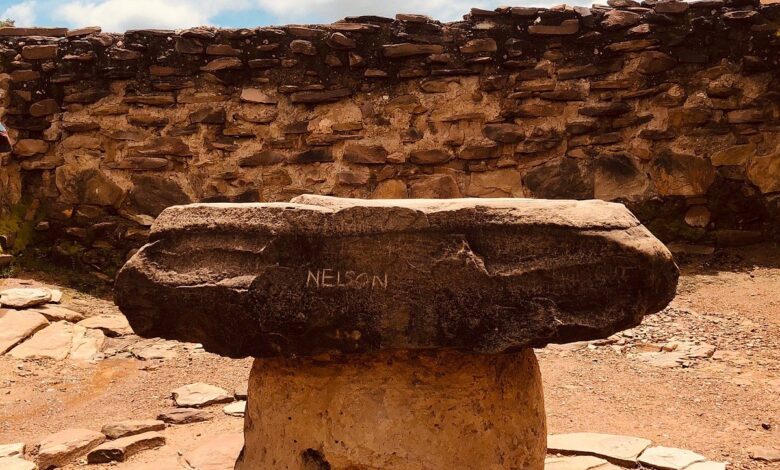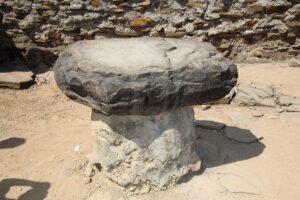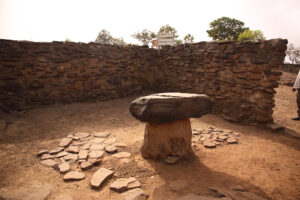Know more about “THE MYSTIC STONE”

The Mystic Stone is located in Larabanga, in the West Gonja area, near the city of Damongo. It is about 6 kilometres from the famed Mole National Park and 21 kilometres from Damongo.
The stone initially achieved notoriety in the 1950s, when the British colonial administration began construction on a road in the Damongo area, where it was discovered. A path on which the stone was lying was cleaned as part of the activities to make room for the road project.
Larabanga is a community known to be a site of myths and mystical happenings. The stone is known to return to its original place of rest after several attempts of moving it to a different location. In the 1950s, some British road constructors were compelled to redirect a major road after 3 attempts to remove the stone. Since all efforts proved futile in moving it from its original location, the legendary rock was left at its place of rest and it is now conserved as a tourist site by the natives to spread its history and also to generate revenue to the community
The mystical powers of the stone can be traced to the years of Ndewura Jakpa, an African king and founder of a dynasty in Gonja in the early 17th century. Being the leader of the Gonjas, Jakpa had wanted to conquer and unite the vast lands in West Africa, but this was proving difficult due to the diverse tribes and kingdoms that resisted his move.

Kango, an ancient town in present-day Cote d’Ivoire had fiercely resisted Jakpa in his attempts to unite the lands. Thus, to help him in his mission, Jakpa invited the first Kamaras to Ghana – Idana Ibrahim and Fatawu Murkpe – who were spiritual leaders to guide him and his troops in battle.
The two had come from present-day Saudi Arabia, and possessed several magical charms, which they used in helping the Gonjas to capture Kango. They would later assist the Gonjas as administrators of Islamic law, as conflict mediators and as prayer leaders,
Jakpa later died in battle when he crossed the White Volta. Before his death, he told Idana Ibrahim, who was now too old to return to Saudi Arabia, that he could settle anywhere on the lands he (Jakpa) had conquered.

Varying accounts state that Ibrahim sat at the Mystic Stone offering some prayers for direction from God as to where to settle in Gonja land. While praying, he had a dream that he should throw a spear and wherever it fell would be his home. He should also build a mosque there.
He did as he was told in the dream the next morning, and the spear landed on a “high fertile ground” at “Zuriyir”, a village where the “Dhen Zuo” people had earlier settled and left. On that particular site, Ibrahim realized that the foundation for the mosque had already been built.
Ibrahim started building the mosque, which legend said increased in height every night over and above what was built during the day. With divine intervention, he completed the mosque within a short notice and called the place his home. He would offer prayers at the Mystic Stone while building the mosque.
Many other Muslims outside Larabanga and even people of other faiths and religions, head to the town during such occasions for blessings and to seek more about the Quran, the mosque, and of course the Mystic Stone, which reportedly stopped one Samuri Turi, belonging to present-day Guinea, on his all-conquering spree of West Africa.
With a population of about 1500 inhabitants, predominantly farmers, residents of Larabanga grow yam, millet, sorghum and maize. Their elders have termed the stone as the Mystic Stone or the Wish Stone, and the sacred object is found closer to the famed Laranbaga (Ghana’s oldest mosque, and one of the country’s most revered religious sites), serving as a tourist site to many people across the world.
Others also use the site as a place of worship, hoping to receive miracles of healing, childbirth and financial freedom, just at the touch of the stone.
The location has also grown in importance as a tourist attraction in the northern region, attracting thousands of visitors each year, most of whom come from other regions of the country.
source:Agudie Amankwah




